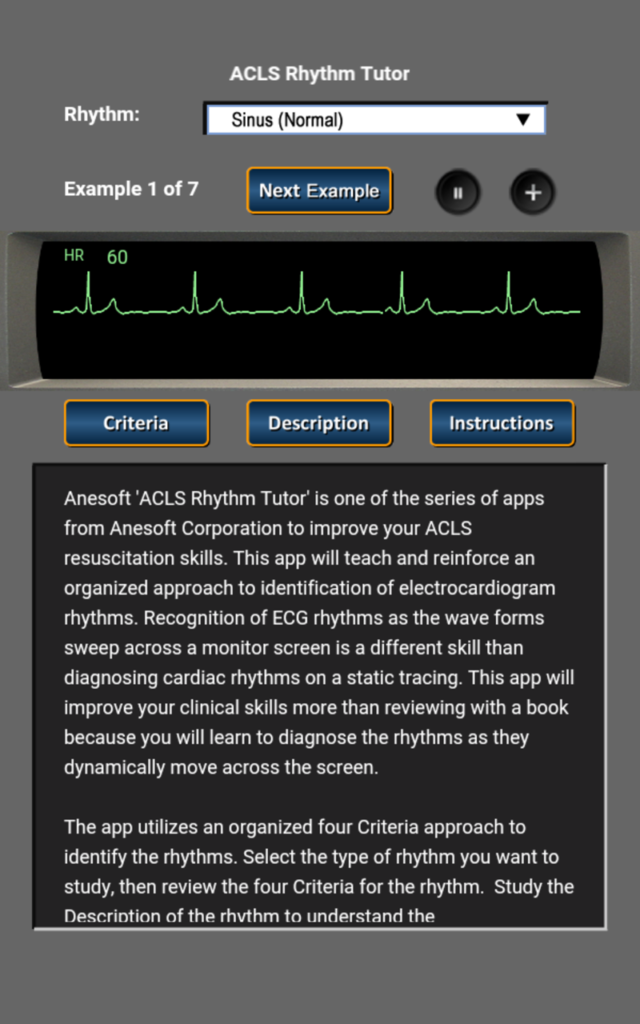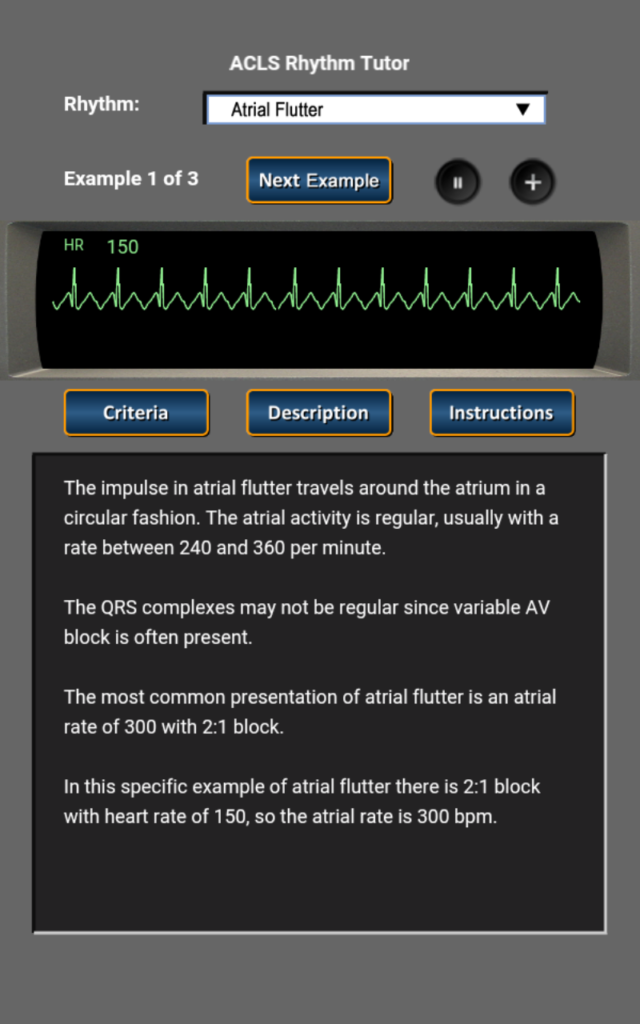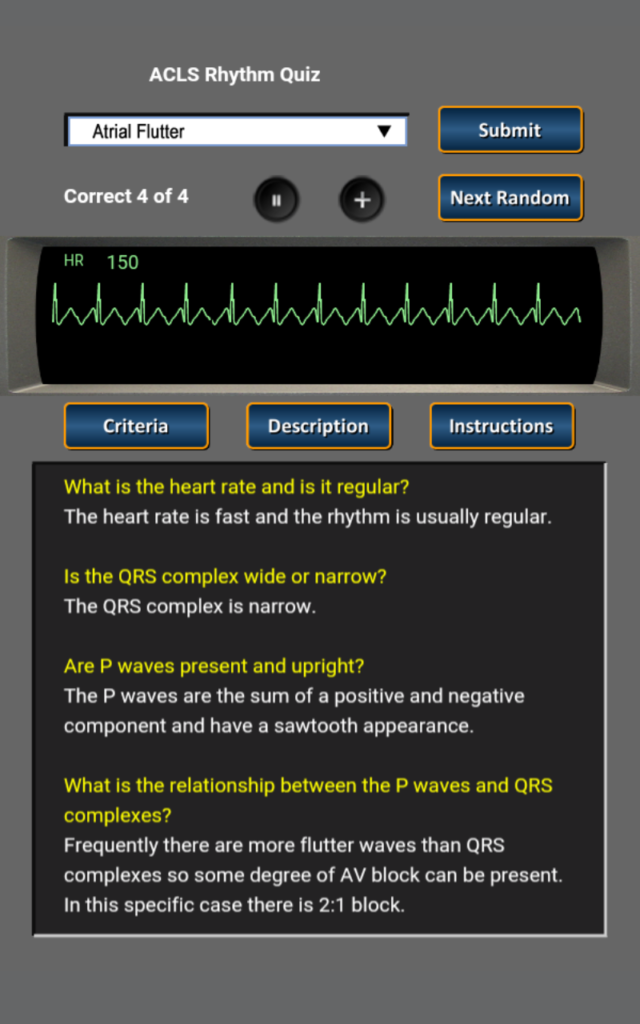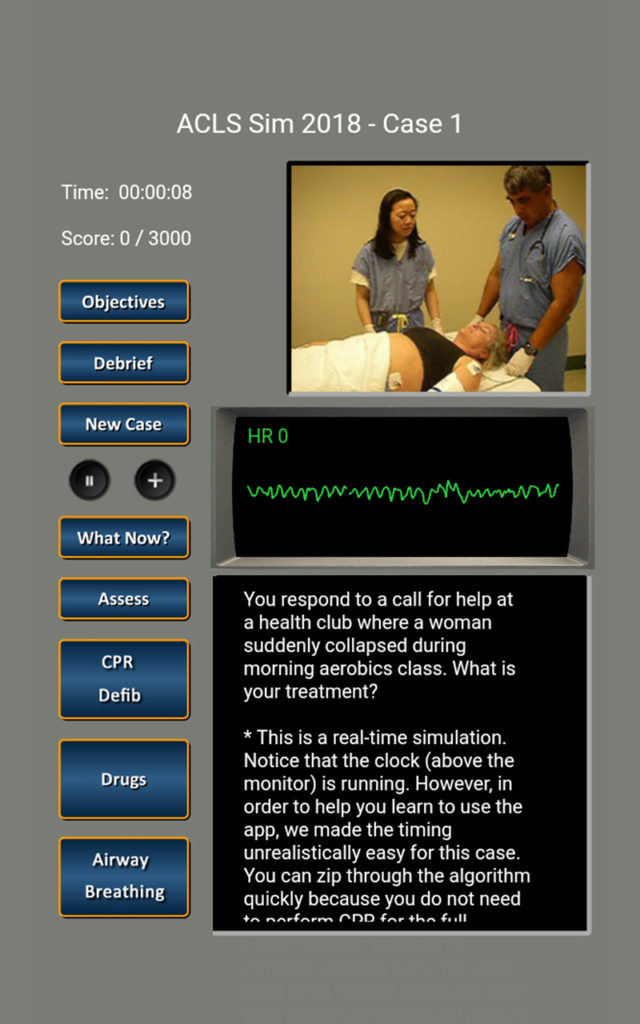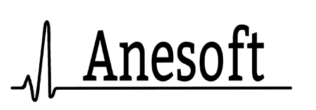Available at Apple App Store and Google Play Store
‘ECG Rhythms and ACLS Cases’ combines all the content of ACLS Rhythm Tutor, ACLS Rhythm Challenge, and ACLS Simulator into one app.
‘ECG Rhythms and ACLS Cases’ will help you pass the American Heart Association Advanced Cardiac Life Support ACLS course. With regular use of the app you will maintain your cardiac resuscitation skills so that you will be ready to serve as an effective leader of the ‘code blue’ team.
The ECG Rhythms modules present 80 different electrocardiogram wave forms as they sweep across the screen just like on a real ECG monitor. Use the Tutor mode to identify the cardiac rhythm using an organized four criteria approach to identify the rhythms. Then study the description of the rhythm to understand the electrophysiology and cardiac events. Use the same process to review all the ECG rhythms. When you feel you have mastered the rhythms in this program you should test yourself using the Challenge mode.
Recognition of EKG rhythms as the wave forms sweep across a monitor screen is a different skill than diagnosing cardiac rhythms on a static tracing. This app will improve your clinical skills more than reviewing with a book because you will learn to diagnose the EKG rhythms as they dynamically move across the screen.
After you are comfortable identifying the cardiac rhythm, you can use ACLS Cases module to practice resuscitation of patients based on the latest ACLS guidelines. ACLS Cases enables you to rehearse megacode management in a realistic screen-based simulator. The current version follows the updated 2020 AHA treatment guidelines. You must evaluate the patient and electrocardiogram rhythm, decide on the appropriate management, and serve as the team leader guiding two assistants through the resuscitation including administration of electrical defibrillation and medications.
There are 12 cardiac arrest case scenarios included. The first three cover ventricular fibrillation, the next two are for pulseless ventricular tachycardia, another covers asystole, and the remainder of the cases cover the tachycardia algorithms. This app is for training purposes only. Do not assume a real patient will behave exactly the same as any of the simulated patients, however, with regular practice you will always be ready to lead a full cardiac resuscitation.
